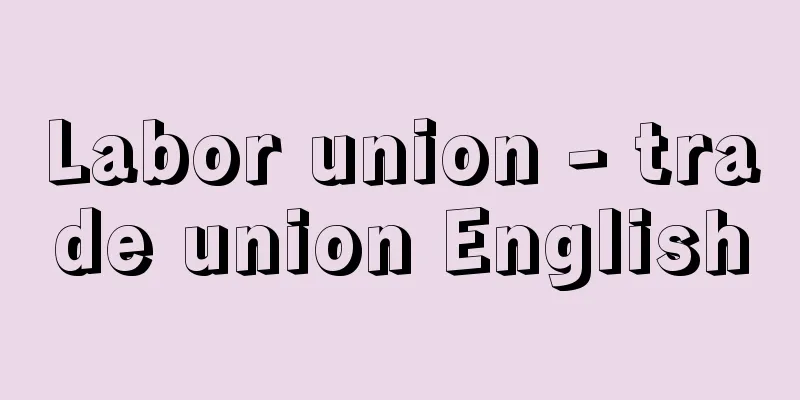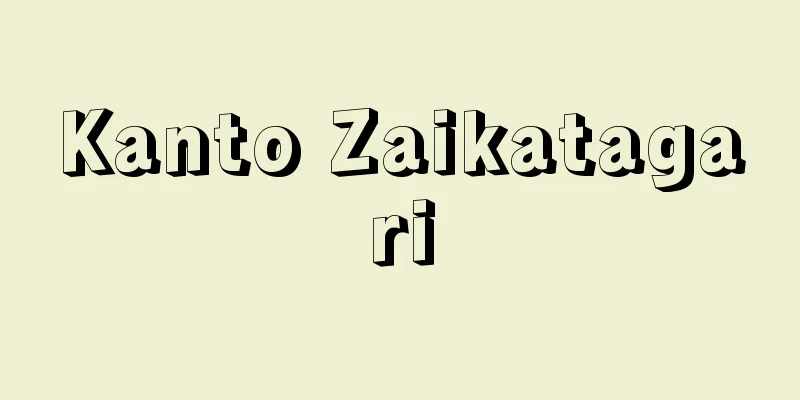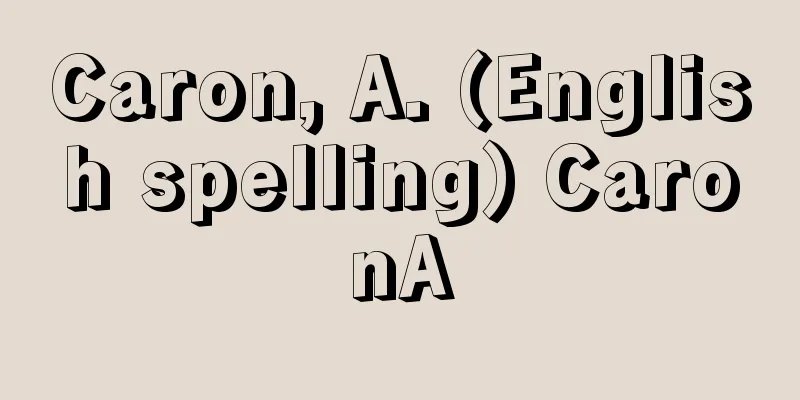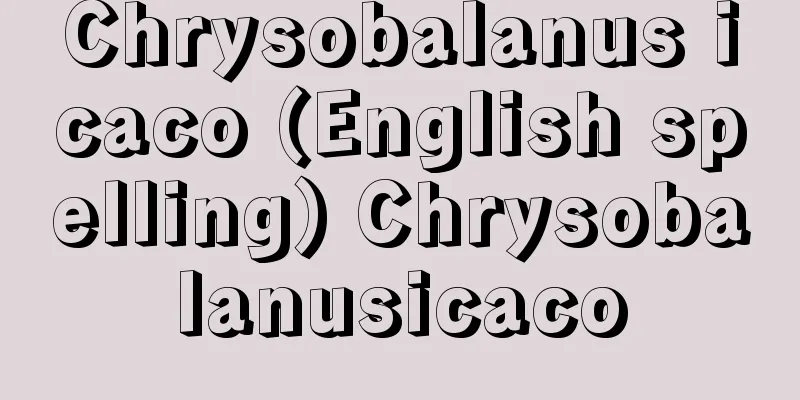Labor union - trade union English

|
A labor union is a mass organization formed voluntarily and permanently by wage laborers to maintain and improve their wages, working hours, and other working and living conditions. It is distinct from workers' political parties, which are formed on the basis of political beliefs, in that it is a mass organization formed based on the direct and concrete demands of workers, regardless of differences in ideology or beliefs. Labor unions are considered the most basic of the mass organizations of the working class. [Seiichiro Hayakawa] occurrenceThe nascent form of labor unions was already seen in 17th century England. Since the beginning of labor unions, they were subject to severe oppression by capitalists and the government, so they initially took the form of mutual aid societies, cooperatives, or secret societies to defend themselves and help each other. The historical prerequisite for the full-scale formation of labor unions was the full-scale development of capitalist production and class relations between capital and wage labor. In England, during the Industrial Revolution that unfolded from the 1760s in the 18th century, mechanized factory industries developed rapidly, mainly in the spinning and coal industries. At the same time, this process was a process in which fallen peasants, craftsmen, and even women and children were brought into factories as wage laborers, and harsh exploitative relations based on low wages and long working hours developed. During the progress of this Industrial Revolution, the movement to form unions, mainly among skilled laborers, became widespread, and in England, the Anti-Organization Act was enacted in 1799 and 1800. However, even under these repressive laws, unions continued to organize and workers continued to resist violently, and the Anti-Organization Act was eventually repealed in 1824 and 1825. Britain had now entered an era of industrial capitalism, in which capitalist production had made steady progress, but the trade union movement also underwent new developments. Thus, the development of capitalist production through the Industrial Revolution and the social and mass formation of the working class against the capitalist class were prerequisites for the full-scale emergence of labor unions. Therefore, the reason for their emergence lies within the capital-wage labor relationship itself. Under capitalist class relations, workers who do not own the means of production and have no way to live except by selling their labor power to capitalists are in a relatively weak position in the buying and selling of labor power commodities. In particular, the constant existence of an industrial reserve army and a relative surplus population further exacerbates this situation. Wage workers, who are economically weak, have no choice but to unite to trade labor power commodities in a lump sum, thereby strengthening their competitive power. Labor unions were born from such efforts. Therefore, the issues that labor unions dealt with were initially limited to economic demands such as wages and improvements in working conditions. However, in relation to the state's response to solidarity itself, issues of solidarity, collective action, and other rights were always present. In that sense, solidarity always has a political character. [Seiichiro Hayakawa] Organizational structure and functionIn the history of labor unions, various organizational forms have been adopted, but three types of unions have played important roles in relation to the development stage of capitalism: occupational unions, general workers' unions, and industrial unions. After looking at these, we will also touch on enterprise unions, which are dominant in Japan. [Seiichiro Hayakawa] Craft unionIt has the longest tradition in the history of labor unions. It is a union formed by workers who have reached a certain level of skill through training, regardless of industry or company, based on the commonality of their occupation. With the simplification of labor through mechanization caused by the Industrial Revolution, a large number of unskilled workers flowed into the labor market. They entered the areas of work that had previously been the domain of skilled workers, and affected employment and working conditions. In response to this, occupational unions were created to regulate the supply of skilled labor qualified to work in order to protect the interests of skilled workers in each occupation. Therefore, these unions were also exclusive organizations for skilled workers. This was possible because, despite the progress of mechanization and simplification of labor caused by the Industrial Revolution, skilled workers who had acquired certain skills still played a key role in the production process, and the supply of skilled workers was limited. The United Mechanics' Union, which was founded in England in 1851, was a typical example of this occupational union. The policies and functions of occupational unions can be summarized into the following five: (1) Restricting entry into skilled trades by regulating the apprenticeship system. (2) Defining the boundaries of work and monopolizing that work by the union. (3) Regulating the way work was done and the speed. (4) Setting standard wage rates through the above. (5) Maintaining an independent mutual aid system based on the principle of self-help. These occupational unions were conservative and moderate in nature during the initially smooth development of capitalism. But with the further development of mechanization and technological changes from the end of the 19th century, the very skill that was the foundation of the union's existence began to disintegrate, and the occupational unions weakened and ceded their dominant position. [Seiichiro Hayakawa] General unionThe process of the decline of old unionism, with the weakening and dissolution of occupational unions, was also the process of the rise of new unionism, represented by general unions. General unions are unions that broadly include workers from various occupations and industries, especially unskilled workers, within a single union. The strike by dockworkers in London in 1889 was a decisive turning point for the development of general unions. General unions were formed in ports, transportation, shipping, gas, and coal mining, and the exclusivity of old organizations began to crumble. Socialist ideas also began to combine with new unionism. The policies and functions of general unions were characterized by their transcending the boundaries of individual capital, demanding from the state (1) the security of jobs in public institutions, (2) a statutory eight-hour workday and a minimum wage system, and (3) unemployment protection through social insurance. In other words, they strengthened their character as a working class movement against the state, and while combining with political struggles, they also appealed to collective bargaining, strikes, and legislative struggles as forms of struggle. [Seiichiro Hayakawa] Industrial unionAs capitalism entered the monopoly stage and mass production methods were developed based on the mechanization of production processes and technological change, old and skilled occupations were broken down, new occupations were created, the division of labor within industries deepened, and work became objectified and simplified. As a result, a large number of semi-skilled and unskilled workers appeared, and industrial unions emerged to organize all workers within the same industry, regardless of differences in occupation or level of skill within the company. The National Railway Workers' Union in the UK was the pioneer in 1913, and since then, industrial organization has progressed rapidly. The policies and functions of industrial unions include (1) the union shop system, (2) the determination of wages and working conditions through collective bargaining, and (3) the demand for industrial and social policies. The union shop system means labor market control based on the principle that workers must join a union within a certain period of time after being hired, and that workers who lose their union membership are fired. Next, the determination of wages and working conditions through collective bargaining was accompanied by the conclusion of industry-wide labor agreements, but when labor-management disputes intensified due to failure of negotiations, a dispute mediation and arbitration system was introduced. Furthermore, the development of policy demands by industrial unions promoted the development of their political functions. In any case, industrial unions are regarded as having the most fundamental importance as mass militant organizations of the working class during the monopoly stage. Currently, this industrial organization form is dominant among labor unions in Europe and the United States, but in countries such as the United Kingdom, the tradition of general unions and occupational unions still remains. [Seiichiro Hayakawa] enterprise unionAfter the Second World War, enterprise unions have been the overwhelmingly dominant form of labor union organization in Japan. Enterprise unions are organizations that treat a company or business establishment as a unit and have workers with regular employee status as union members. In other words, the company or business establishment is the unit, and union members are limited to regular employees excluding temporary workers and part-timers. Moreover, all employees, regardless of whether they are employees or factory workers, are members of the union. Union officials are also assumed to have regular employee status, just like union members. There is much debate as to why enterprise unions are so dominant in Japan, but their origin can be found in Japanese capitalism and the special circumstances of the Japanese labor market, which have diluted the tradition of cross-company unions that began with occupational unions. In other words, seniority-based labor-management relations, including lifetime employment and seniority-based wages (seniority-based wages), have been formed mainly in large private companies and public offices, and this, combined with the company-wide welfare facility system, is thought to have led to the establishment of enterprise unions. In terms of the development of their functions, enterprise unions are characterized by the enterprise union shop system and enterprise collective bargaining. These enterprise unions have been grouped together by industry to form unitary industrial associations (tansan), and efforts have been made to have these associations function effectively as industrial associations. However, while industrial associations in the West are essentially cross-company associations, Japanese industrial associations (tansan) are "unions of unions," and cannot avoid the character of being a vertical association with weak cross-sectionality, i.e., a collection of enterprise unions. [Seiichiro Hayakawa] Labor unions and the lawHistorically, the legal system of the state has responded to trade unions as follows: from oppression to liberation, the right to organize and then the right to strike, and the development of unfair labor practices and dispute settlement systems. Here, we will focus on advanced capitalist countries in the West, including the United Kingdom. In the process of the Industrial Revolution in Britain, the Anti-Organization Act was enacted in 1799 and 1800, replacing the previous policy of banning individual unions, and unions were generally prohibited. However, in 1824 and 1825, the Anti-Organization Act was repealed, marking a major step from oppression to liberation. Furthermore, the Trade Unions Act of 1871 made it clear that a trade union would not be considered illegal simply because its purpose was to restrain trade. The Conspiracy and Protection of Property Act of 1875 went further, providing criminal immunity for industrial action, and the Industrial Disputes Act of 1907 provided civil immunity. However, these acts, which were not illegal when performed by one person, were considered illegal when performed by a group, leaving the guarantee of the right to organize insufficient. In the 20th century, the right to organize began to be differentiated from the freedom of association and guaranteed as a fundamental constitutional human right. The Constitution of the German Republic (Weimar Constitution), which was established as a result of the 1918 revolution, was the pioneer of this, and after World War II, it was passed down to the constitutions of advanced European countries, except for the United Kingdom and the United States, such as the Constitution of the Fourth Republic of France in 1946, the Italian Constitution in 1947, and the Basic Law of Bonn in Germany in 1949. However, the right to strike was not similarly guaranteed in the constitution. In the United States and the United Kingdom, the guarantee of the right to strike was merely a passive guarantee of the right to strike without legal sanctions even if workers engaged in industrial action. Even in France and Germany, which guaranteed the right to strike more actively, it was not guaranteed as a constitutional right. In contrast to the legal guarantee of the right to organize and the right to strike, the legal guarantee of the right to collective bargaining is not included. This was because if the right to organize and the right to strike were guaranteed, not only was there no need to give legal guarantees to collective bargaining, but it was also inappropriate to legally enforce collective bargaining. In Germany and France, labor agreements that are the result of collective bargaining are given legal effect. In the United States and the United Kingdom, agreements are not given legal effect, and the general rule was that the state does not intervene in collective bargaining. However, in the United States, the Wagner Act of 1935 introduced an unfair labor practice system, which guaranteed solidarity and collective bargaining from that perspective. However, both countries introduced separate labor dispute mediation and arbitration systems, and in that respect state regulation and intervention in labor-management relations was strengthened. [Seiichiro Hayakawa] Japanese Labor LawsBefore the Second World War, there was no legal guarantee of basic labor rights; instead, harsh repression and crackdowns were the norm. In 1900 (Meiji 33), the Public Order Police Law was enacted, and union formation and strikes were severely controlled. Furthermore, as the influence of Marxism spread to Japan's labor and social movements, the Public Order Preservation Law was enacted in 1925 (Taisho 14), and even harsher repression was implemented. With the end of the Second World War, as part of Japan's democratization, oppressive laws were abolished and the Labor Union Law was enacted, allowing labor unions to be recognized and protected for the first time. In particular, the Constitution of Japan, which came into force on May 3, 1947 (Showa 22), was groundbreaking in that it guaranteed the right to work and stipulated working conditions in Article 27, and guaranteed workers' rights to organize, bargain collectively, and act collectively (the right to strike) in Article 28, providing a constitutional basis for labor legislation. However, the order to halt the February 1st strike in 1947, the MacArthur Letter and Cabinet Order No. 201 in 1948, the revision of the National Public Service Law, and the enactment of the Public Corporation Labor Relations Law (now the Law Concerning Labor Relations of Administrative Execution Corporations, abbreviated as the Public Corporation Labor Relations Law) meant that the basic labor rights of public sector workers were significantly restricted. Furthermore, many workers have their basic labor rights restricted by the Labor Relations Adjustment Act's emergency adjustment provisions for electric utility and coal mining workers, as well as a notice from the Vice Minister of Labor regarding limits on the use of force (picketing restriction notice).Thus, the Japanese Constitution has become an internationally advanced 20th century constitution, but it contains many problems in terms of the actual content of the protection of basic labor rights.In particular, while the right to organize is guaranteed for national and local public servants under the National Public Servant Act and the Local Public Servant Act, part of the right to collective bargaining and the right to strike are denied.In November 2002, the ILO Governing Body pointed out violations of ILO Conventions 87 and 98 and recommended revisions, but the recommendation remains unresolved. [Seiichiro Hayakawa] Japanese Labor UnionsJapan's labor union movement began to develop through the formation of independent organizations amid the rapid progress of the Industrial Revolution following the First Sino-Japanese War (1894-1895). For information on subsequent developments, please refer to the "Labor Movement" entry. [Seiichiro Hayakawa] Organizational StructureToday, the vast majority of Japanese labor unions are enterprise unions, which organize regular employees, regardless of whether they are employees or workers, at the enterprise or workplace. Of course, there are exceptions, such as single industrial unions, which organize workers in the same industry regardless of workplace, and regional unions, which organize mainly in a region. In particular, the role of general labor unions and joint labor unions is being reconsidered in relation to the organization of workers in small and medium-sized enterprises. However, these organizational forms are very few, and the vast majority are enterprise unions. In the case of large companies, enterprise federations (enterprise federations) are formed based on these unit unions, and industrial federations are built on these unit unions and enterprise federations. Furthermore, these industrial federations are brought together to form national central organizations, such as the Japanese Trade Union Confederation (RENGO) and the National Trade Union Confederation (Zenroren). Unit unions also form the basis of regional organizations such as district labor union councils (Sekiro) and local labor union councils (Chihyo, prefecture-level), and these regional organizations are complementary subordinate organizations of the national central organizations. When local unions join an industrial federation, they do so not as individuals but as a group on a union basis. Thus, enterprise unions hold a strong foothold in the overall organizational structure of labor unions. In this regard, the relationship between industrial federations (singles), enterprise unions, and enterprise federations (enterprise federations) is a central issue. Breaking away from enterprise unions and strengthening the functions of industrial organizations has been a long-standing issue, but enterprise federations have the most power in controlling union finances, and with some exceptions, enterprise federations (especially the large enterprise unions at the center of them) are the de facto negotiating bodies for collective bargaining. With the exception of the All Japan Seamen's Union (seamen), there is almost no practice of management organizations and industrial unions negotiating and concluding agreements. Furthermore, the negotiating functions of regional organizations are weak, and in reality, in many cases, they are organizations for exchanging information during spring labor offensives or for temporary mass action. Breaking away from enterprise unions and strengthening industrial and regional organizations are old but new issues, but it is of concern that not only has the weight of large private enterprise unions increased significantly since the end of the 1960s, but at the same time, the trend toward in-company unionization has also become significantly more pronounced. At the same time, movements to counter this trend are growing stronger. [Seiichiro Hayakawa] Current status of organizationBefore the Second World War, Japan's labor unions had a peak membership of about 420,000 (1936), with an estimated unionization rate of 7.9% (1931). After the war, the formation of labor unions progressed rapidly, and the unionization rate recorded a 50% level in 1948-1949. The number of union members reached 10 million in 1965, but has been falling below this level since 2011, and stood at 9,882,000 as of the end of June 2015. The estimated unionization rate as a percentage of the number of employees has been gradually decreasing since 1975, and was 17.4% as of the end of June 2015. More than two-thirds of Japanese workers are not organized, and because the vast majority are company-specific unions, the majority of workers in small and medium-sized enterprises, and even in large enterprises, temporary workers, part-timers, and other groups with poor wages and working conditions are left to their own devices. This is a major obstacle to strengthening solidarity among the working class, overcoming Japan's low wage levels and working conditions, and raising the bottom line. However, the growing number of part-time workers is also gradually being organized, and as of the end of June 2015, their number stood at 1,025,000, accounting for 10.4% of all labor union members and 7.0% of part-time workers. Looking next at the state of unionization by industry, as of the end of June 2015, the highest unionization rates were in the electricity, gas, heat supply and water industries at 67.1%, finance and insurance at 49.4%, compound service businesses at 44.7% and public service at 38.0%, while agriculture, forestry and fishing had the lowest rates at 2.0%. This unionization rate is actually closely related to the distribution of company size within a given industry. For example, the electricity, gas and heat supply industry includes large companies. Conversely, agriculture, forestry and fishing has many small and medium-sized enterprises. There is a correlation between the large disparity in unionization rates by size and the disparity in unionization rates by industry. Looking at the breakdown of union membership by size in private enterprises, 64.9% were in those with 1,000 or more employees and 13.8% in those with 300-999 employees, totalling roughly 80%. The figures are 7.3% for those with 100-299 employees, 2.4% for those with 30-99 employees, and 0.3% for those with 29 employees or less. This shows that while the unionization rate is high in large companies, the situation in small and medium-sized enterprises is extremely low. Next, in terms of the number of union members by applicable law as of 2015, the Labor Union Law was 85.8%, the Public Administrative Labor Law 0.1%, the Local Public Enterprise Labor Relations Law 1.4%, the National Public Service Law 1.0%, and the Local Public Service Law 11.7%. By major organization, there were 6.75 million members under the Rengo (Republic Association of Trade Unions), 570,000 members under the Zenroren (All Japan Trade Union Federation), and 100,000 members under the National Council of Trade Unions (Zenrokyo), 1.1%. The above are the main points of the current organizational situation, but the trend of a major reorganization of the labor front in the 1980s is particularly noteworthy. In December 1982, the All-Japan Private Sector Trade Union Council (Zenminrokyo) was launched. This Zenminrokyo went beyond the framework of the existing national centers to become a conglomeration of organizations centered around big private sector unions. In November 1987, this organization further developed into a federation. This was the All-Japan Private Sector Trade Union Confederation (Minrengo), which consisted of 55 private sector unions, 1 observer member, and 6 friendly organizations, for a total of 62 organizations with 5.55 million participants. With the formation of Minrengo, Domei and Neutral Labor Union were dissolved. Furthermore, Sohyo, which set the goal of "total unification" including public sector labor unions, was dissolved in November 1989 when the All-Japan Private Sector Trade Union Confederation and the Public Sector Trade Union Union were unified to form the Japanese Trade Union Confederation (Rengo). In response to this movement for a major reorganization of the labor front, the movement of opposing forces that strongly criticized and opposed it as a right-wing unification of the front grew stronger, and these forces united in Zenroren in opposition to Rengo. The labor front in Japan has undergone repeated fragmentation and reunification both before and after the war. It will be interesting to see in what direction today's new trends will settle down. [Seiichiro Hayakawa July 19, 2017] Trade unions around the worldUp until now, the three major organizations that have played important roles as international organizations are the World Confederation of Trade Unions (WFTU), the International Confederation of Free Trade Unions (ICFTU), and the International Trade Union Confederation (WCL). Of these, the ICFTU and WFTU, especially the former, have the closest ties with Japan. As the circumstances surrounding its formation, which saw it split from the WFTU (1949), show, the ICFTU had a strong anti-communist character, but this character has now largely faded. Among the labor organizations of major capitalist countries, the French General Confederation of Labor remains a member of the WFTU, even though the number of WFTU organizations has drastically decreased. Rengo is a member of the ICFTU. However, with the changes in Eastern Europe since the late 1980s and the collapse of the Soviet Union, the WFTU organization has been greatly weakened, and its influence on Japan has also diminished. At that point, the only major organisations remaining in the WFTU were a handful, including the French General Confederation of Labour (CGT, or SEG), the Cuban General Confederation of Labour (CTC), the Korean General Confederation of Trade Unions, the All India Trade Union Congress (AITUC) and the Vietnam General Confederation of Labour. In November 2006, the International Trade Union Confederation (ITUC) was formed based on the existing International Free Trade Union Confederation and the International Trade Union Confederation, and with the addition of "independent" national centers that had not previously joined international organizations. At the time of its formation, there were 304 trade union national centers from 153 countries and regions around the world, with a total membership of approximately 168 million people. The International Free Trade Union Confederation and the International Trade Union Confederation were dissolved in a progressive manner. The Confederations joined the ITUC as a group when it was formed. Currently, labor unions organized in countries around the world maintain some kind of relationship with these international organizations. In particular, the ITUC organizes a wide range of labor unions, mainly from developed capitalist countries and developing countries, such as the AFL-CIO (American Federation of Labor-Congress of Industrial Unions), the British Trade Union Congress (TUC), and the German Trade Union Confederation (DGB). [Seiichiro Hayakawa] "The Story of Japanese Labor Unions," by Kazuo Okawa et al., 5 volumes (1965-1973, Chikuma Shobo)" ▽ "The Story of Postwar Labor Movement History Publishing Committee, ed., "The Story of Postwar Labor Movement History," 10 volumes (1997-2000, Education and Culture Association)" ▽ "100 Years of Japanese Labor Unions," edited by Ohara Institute for Social Research, Hosei University (1999, Junpousha)" ▽ "Special Feature: 50 Years of the International Labor Union Movement," edited by Ohara Institute for Social Research, Hosei University (included in Japan Labor Yearbook, Vol. 70, 1999, Junpousha)" ▽ "Compilation of Documents on the Japanese Labor Movement," edited by Ohara Institute for Social Research, Hosei University, 14 volumes (2005-2007, Junpousha)" ▽ "Special Feature: The Formation of the International Trade Union Confederation (ITUC), edited by Ohara Institute for Social Research, Hosei University (included in Japan Labor Yearbook, Vol. 78, 2008, Junpousha)" ▽ "Japan Labor Yearbook" compiled by the Ohara Institute for Social Research, Hosei University, especially Part 3 "Labor Union Organizations and Movements" Annual Edition (Shunposha)" ▽ "Ministry of Health, Labor and Welfare, compiled and published "Comprehensive Survey of Labor-Management Relations (Basic Survey of Labor Unions)" Annual Edition" [Reference items] | | | | | | | | | | | | | | | | | | | | | |Source: Shogakukan Encyclopedia Nipponica About Encyclopedia Nipponica Information | Legend |
|
賃金労働者が自分たちの賃金、労働時間をはじめ、労働・生活の諸条件を維持、改善するために、自主的かつ恒常的に結成した大衆組織をいう。思想、信条などの相違にかかわりなく、労働者の直接的・具体的要求に基づいて組織される大衆組織である点で、政治信条を基礎に結成される労働者政党とは区別される。労働組合は、労働者階級の大衆組織のなかでもっとも基本的なものとみなされている。 [早川征一郎] 発生労働組合は萌芽(ほうが)形態としてはすでに17世紀イギリスでみられた。労働組合はその発生当初から資本家や政府の厳しい弾圧下に置かれたので、自らを防衛し相互の助け合いを目的に、初めは共済組合や協同組合の形や秘密結社の形をとったりした。労働組合の本格的形成の歴史的前提条件は、資本主義的生産および資本・賃労働の階級関係の本格的展開にある。イギリスでは、18世紀の1760年代以降に展開された産業革命の過程で、紡績、石炭産業などを中心に急速な機械制工場工業の発達をみた。この過程は同時に、没落した農民、手工業者、さらに女性・児童をも賃金労働者として工場に導き入れ、低賃金、長時間労働に基づく過酷な搾取関係が展開した過程でもあった。こうした産業革命の進展の過程で、熟練労働者を中心とした組合結成の動きも広範にみられるに及んで、イギリスでは1799年、1800年に団結禁止法が制定された。だが、その弾圧法のもとにあっても、組合の組織化、労働者の激しい抵抗が絶えることなく、1824年および1825年に至って、団結禁止法は撤廃された。ときにイギリスは、資本主義的生産としてはひとまず順調な発展を遂げた産業資本主義の時代に入ったが、労働組合運動もまた新たな展開を遂げた。 こうして労働組合は、産業革命を通じた資本主義的生産の発展、資本家階級に対する労働者階級の社会的・大量的形成を前提条件にし、そのうえに本格的な発生をみた。したがって、その発生の理由は資本・賃労働関係そのもののうちにある。資本主義的階級関係の下では、生産手段をもたず、自らの労働力を資本家に売る以外には生活の道がない労働者の側は、労働力商品の売買において、相対的に弱い立場にたたされている。とくに産業予備軍、相対的過剰人口の不断の存在は、この事情にいっそう拍車をかける。経済的弱者たる賃金労働者は結局、団結することを通じ労働力商品の取引を一括して行い、それによって対抗力を強める以外にない。そうした努力から労働組合が生まれた。したがって労働組合が取り扱う問題は、初めは賃金、労働諸条件の改善など経済的要求に限られていた。だが、団結そのものに対する国家の対応との関係では、つねに団結や団体行動などの権利の問題が付きまとっていた。その意味では、団結には政治的性格が不断に伴っている。 [早川征一郎] 組織形態・機能労働組合の歴史上、さまざまな組織形態がとられてきたが、資本主義の発展段階との関連で重要な役割を演じたものとして、職業別組合、一般労働者組合、産業別組合の三つがあげられる。それらをみたうえで、日本で支配的な企業別組合にも触れることにする。 [早川征一郎] 職業別組合craft union労働組合の歴史のなかで、もっとも古い伝統をもつ。産業や企業のいかんを問わず、訓練を経て一定の技能水準に達した労働者が、職業の共通性を基礎として結成した組合である。産業革命による機械化を通じ労働の単純化が進み、大量の不熟練労働者が労働市場に流れ込んだ。これまで熟練労働者のものとなっていた仕事の領域にも入り込み、雇用・労働諸条件にも影響を及ぼした。これに対し、それぞれの職業の熟練労働者の利益を守るため、仕事につく資格のある熟練労働力の供給を規制しつつ生まれたのが職業別組合である。それゆえ、この組合は熟練労働者の排他的組織でもあった。これが可能であったのは、産業革命による機械化、労働の単純化の進展にもかかわらず、生産過程でなお基幹的役割を演じたのは、一定の技能を習得した熟練労働者であり、その供給には限度があったからである。イギリスで1851年に生まれた合同機械工組合は、この職業別組合の一つの典型であった。 職業別組合の政策、機能としては次の五つにまとめることができる。(1)徒弟制度の規制による熟練職種への入職制限。(2)仕事の縄張りの確定とその仕事の組合による独占。(3)仕事のやり方、スピードの規制。(4)以上を通じた標準賃率の設定。(5)自助の原則による自主的な共済制度の維持。こうした職業別組合は資本主義のひとまず順調な発展のなかで、保守的で穏健な性格をもっていた。やがて19世紀末からの機械化のいっそうの発展、技術変化に伴い、この組合の存立基盤であった熟練そのものの解体が進むに及んで、職業別組合は弱体化し支配的地位を譲った。 [早川征一郎] 一般組合general union職業別組合の弱体化、解体という旧組合主義の没落の過程は、同時に一般組合に代表される新組合主義の台頭の過程でもあった。一般組合は、各種の職業や産業にまたがる労働者、なかでも不熟練労働者を単一の組合の内部に広範に包含するものである。1889年のロンドンでのドック労働者のストライキは一般組合の発展の決定的契機となった。港湾、運輸、海運、ガス、炭鉱などで一般組合が結成され、古い組織の排他性も崩れ始めた。また社会主義思想も新組合主義と結合し始めた。一般組合の政策、機能としては、国家に対して、(1)公的な機関による職域の確保、(2)法定8時間労働日や最低賃金制、(3)社会保険による失業保障などを要求し、個別資本の枠を超えたところに特徴があった。すなわち、国家に対する労働者階級の運動としての性格を強め、政治闘争と結合しつつ、闘争形態も団体交渉やストライキ、立法闘争に訴えたりした。 [早川征一郎] 産業別組合industrial union資本主義が独占段階に入り、生産過程の機械化、技術変化を基調に大量生産方式が展開していくにつれ、旧型職種や熟練職種は分解し、新職種の発生、工業内分業の深化、作業の客観化、単純化が進んだ。この結果、半熟練・不熟練労働者が大量に出現したが、ここに職業や企業内部の熟練度の違いにかかわりなく、同一産業内部の全労働者を組織するものとしての産業別組合が出現する。1913年、イギリスの全国鉄道労働組合が先駆けとなったが、これ以後、産業別組織化が急速に進んだ。産業別組合の政策、機能としては、(1)ユニオン・ショップ制、(2)団体交渉による賃金、労働諸条件の決定、(3)産業政策、社会政策の要求などがあげられる。ユニオン・ショップ制は、雇用されると一定期間内に組合に加入しなければならず、また組合員資格を失った労働者は解雇されるという原則による労働市場統制を意味する。次に団体交渉による賃金、労働諸条件の決定は、産業別労働協約の締結を伴ったが、交渉不調による労使紛争の激化に対しては、争議調停仲裁制度が相伴った。さらに産業別組合の政策要求の展開は、産業別組合の政治的機能の発展を促した。いずれにしても、産業別組合は独占段階における労働者階級の大衆的闘争組織として、もっとも基本的な重要性をもつものとして評価されている。現在、欧米の労働組合ではこの産業別組織形態が支配的であるが、イギリスなどでは一般組合や職業別組合の伝統も残っている。 [早川征一郎] 企業別組合enterprise union第二次世界大戦後、日本における労働組合の組織形態としては、企業別組合が圧倒的に支配的である。企業別組合は、企業ないし事業所を単位とし、正規の従業員資格をもつ労働者を組合員とする組織である。すなわち、企業・事業所が単位となり、組合員の範囲は臨時工、パートタイマーなどを除く常用の従業員に限られる。しかも全従業員が職員、工員の区別なく一括加盟の形をとる。組合役員もまた組合員と同じく正規の従業員資格をもつことが前提となっている。こうした企業別組合が、日本でなぜ支配的であるかについては多くの議論のあるところであるが、職業別組合に始まる企業横断的組合の伝統を希薄ならしめた日本資本主義、日本の労働市場の特殊事情にその由来が求められる。すなわち、民間大企業や官公庁を中心に、終身雇用、年功賃金(年功序列型賃金)などを含む年功的労使関係が形成され、これと企業内福利厚生施設システムが相まって企業別組合を成立させたと考えられる。企業別組合は、その機能の展開にあたっては、企業別ユニオン・ショップ制、企業別団体交渉などを特徴としている。こうした企業別組合を単位産業別に結集した単位産業別連合体(単産)が成立しており、そこで産業別組合としての実質的機能を発揮しようとする努力も行われてきた。だが、欧米の産業別組合が基本的には企業横断的組合であるのに対し、日本の産業別連合体(単産)は「組合の組合」であり、横断性の弱い縦断組合=企業別組合の集合たる性格を免れえない。 [早川征一郎] 労働組合と法制労働組合に対する国家の法制度上の対応は、歴史的には、抑圧から解放へ、団結権ついで争議権の保障、不当労働行為制度と争議調整制度の展開として把握される。ここではイギリスをはじめとする欧米の先進資本主義国を中心に触れる。イギリスでは産業革命の過程で1799年、1800年、それまでの個別的団結禁止政策にかわって団結禁止法が制定され、団結が一般的に禁止された。だが1824年、1825年、団結禁止法が撤廃され、抑圧から解放へ大きな一歩を踏み出した。さらに1871年の労働組合法は、労働組合の目的が取引の制限にあるという理由だけで不法なものとされることはない旨明らかにした。1875年の共謀罪および財産保護法はさらに進んで、争議行為の刑事免責を、1907年の労働争議法は民事免責を定めた。ただし1人で行っても違法でない行為を団結して行うと違法としていた点で、団結権の保障としては不十分さを残していた。 20世紀に入り、団結権の保障を結社の自由と区別し憲法上の基本的人権として保障することが行われ始めた。1918年の革命の結果成立したドイツ共和国憲法(ワイマール憲法)がその先駆けとなり、第二次世界大戦後、イギリス、アメリカを除く、1946年のフランス第四共和国憲法、1947年のイタリア憲法、1949年のドイツのボン基本法など、ヨーロッパ先進国の憲法に受け継がれていった。だが、争議権が同様に憲法上の保障を受けたわけではなかった。アメリカ、イギリスでの争議権の保障は、争議行為を行っても法的制裁を受けないという消極的権利の保障たるにとどまった。より積極的な争議権の保障を行ったフランス、ドイツでも憲法上の保障としては行われなかった。団結権、争議権の法的保障に対し、団体交渉権の法的保障はむしろ対象外になっている。これは団結権、争議権を保障すれば団体交渉にまで法的保障を与える必要はないばかりか、団体交渉を法的に強制することも適当ではないという理由によるものであった。ドイツ、フランスでは団体交渉の結果である労働協約に法的効力を認めた。アメリカ、イギリスでは協約の法的効力を認めず、国が団体交渉に介入しないのが原則であった。ただアメリカでは、1935年のワグナー法で不当労働行為制度を導入し、その側面から団結、団体交渉への保障を行った。だが、別に労働争議調停・仲裁制度がいずれの国においても導入され、労使関係に対する国家の規制、介入はその点で強化された。 [早川征一郎] 日本の労働法制第二次世界大戦前、労働基本権の法的保障は行われず、反対に過酷な抑圧と取締りが支配的であった。1900年(明治33)治安警察法が制定され、組合結成、同盟罷業などが厳しく取り締まられた。さらに日本の労働・社会運動にマルクス主義の影響が及ぶにつれ、1925年(大正14)治安維持法が制定され、一段と過酷な弾圧が行われた。 第二次世界大戦の終了とともに、日本の民主化の一環として弾圧法規の撤廃、労働組合法の制定によって、初めて労働組合が法認され法的保護を受けるようになった。とくに1947年(昭和22)5月3日施行の日本国憲法は、第27条で勤労権の保障、労働条件の法定をうたい、第28条で労働者の団結権、団体交渉権、団体行動権(争議権)を保障し、労働法制に憲法的基礎を与えた点で画期的なものとなった。しかし、1947年の二・一ストの中止命令、1948年のマッカーサー書簡・政令二〇一号、国家公務員法の改定、公共企業体労働関係法(現、行政執行法人の労働関係に関する法律。略称、行労法)の制定を通じ、官公労働者の労働基本権は大幅な制約を受けることになった。また電気事業・石炭鉱業労働者に対する労働関係調整法による緊急調整規定、さらに実力行使の限界に関する労働次官通達(ピケット制限通達)など、多くの労働者が労働基本権を制限されている。こうして日本国憲法は、20世紀憲法として国際的にも先進的内容をもつに至ったが、労働基本権保障の現実的内容では多くの問題が含まれている。とりわけ、国家公務員、地方公務員は、国家公務員法、地方公務員法によって、団結権は保障されているものの、団体交渉権の一部、争議権は否認されており、2002年(平成14)11月、ILO理事会によって、ILO87号条約・98号条約違反が指摘され改定勧告を受けたが、依然として否認されたままとなっている。 [早川征一郎] 日本の労働組合日本の労働組合運動は、日清戦争(にっしんせんそう)(1894~1895)後の産業革命の急速な進展のなかで自主的な組織を結成し、展開し始めた。その後の動きについては「労働運動」の項を参照されたい。 [早川征一郎] 組織構造今日、日本の労働組合の圧倒的多数は、企業・事業所を組織単位とし、正規の従業員のみを職員、工員の区別なく一括して組織する企業別組合である。もちろん例外的には、事業所などにかかわりなく同一の産業の労働者で組織する産業別単一組合、地域を中心に組織する地域組合などがないわけではない。とくに中小企業労働者の組織化に関連して、一般労働組合、合同労働組合などの役割が改めて見直されている。しかし、こうした組織形態をとるものはたいへん少数であり、圧倒的大部分が企業別組合である。この単位組合を基礎に巨大企業の場合は企業別連合体(企業連)を形成し、産業別連合体はこの単位組合、企業連のうえに成り立っている。さらにこの産業別連合体を結集して全国中央団体、すなわち日本労働組合総連合会(連合)、全国労働組合総連合(全労連)といったナショナル・センターが成立している。また単位組合は、地区労働組合協議会(地区労)や地方労働組合評議会(地評。都道府県単位)など地域組織の基礎にもなっており、この地域組織が全国中央組織の補完的な下部組織となっている。単位組合が産業別連合体に加入する形式は、個人加入の形ではなく組合単位の一括加入の形をとる。 このように労働組合の全組織構造のなかで、企業別組合が強固な地歩を占める。この点でとくに産業別連合体(単産)と企業別組合、企業別連合体(企業連)との関係が中心的な問題となる。企業別組合からの脱皮、産業別組織機能の強化が長年の課題とされてきたが、たとえば組合財政の掌握でもっとも力をもつのは企業連であり、団体交渉の中心も一部例外を除いて企業連(とくにその中心にある大企業組合)が実質的交渉機関となっている。経営者団体と産業別組合とが交渉し、協定締結に至る慣行が形成されているのは、全日本海員組合(海員)などの例外を除けばほとんどない。また地域組織の交渉機能も弱く、実際は春闘時の情報交換や一時的な大衆行動組織となっている事例が多い。企業別組合からの脱皮、産業別・地域別組織強化は古くして新しい課題であるが、とくに1960年代末以降、民間大企業組合の比重が著しく増しただけでなく、同時に企業内組合化の傾向も著しく顕著になっていることも懸念される。同時に、その流れに対抗する動きも強まっている。 [早川征一郎] 組織現状第二次世界大戦前の日本では労働組合は、組合員数の最高約42万人(1936)、推定組織率の最高7.9%(1931)にとどまった。戦後、労働組合の急速な結成が進み、組織率では1948~1949年、5割台を記録した。組織人員(組合員数)は1965年に1000万人台に達したが、2011年(平成23)以降はこれを割るようになり、2015年6月末時点では988万2000人である。雇用者数との比率でみる推定組織率では1975年以来漸減傾向にあり、2015年6月末時点で17.4%となっている。日本の労働者の3分の2以上が未組織であること、企業別組合が圧倒的多数であるため、中小企業労働者の大半、大企業でも臨時工、パートタイマーなど賃金、労働条件とも劣悪な層が放置されていることは、労働者階級の連帯強化、日本の低賃金水準・労働条件の克服、底上げにとっても大きな障害となっている。ただ、増大するパートタイマーの組織化も徐々に進み始め、2015年6月末時点で102万5000人となり、全労働組合員に占める比率は10.4%、パート労働者における組織率は7.0%となっている。 次に産業別の組織状況をみると、2015年6月末時点で組織率が高いのは、電気・ガス・熱供給・水道業67.1%、金融業・保険業49.4%、複合サービス事業44.7%、公務38.0%であり、低いのは農業・林業・漁業2.0%となっている。この組織率の高低は、実は当該産業における企業規模分布と密接に関連している。たとえば電気・ガス・熱供給業では大企業を含んでいる。反対に農業・林業・漁業では中小零細分野を多く抱えている。規模別組織率の大きな格差と産業別組織率格差は相関関係にある。民営企業で企業規模別組合員数構成をみると、1000人以上で64.9%、300~999人で13.8%であり、その合計で約8割に達する。100~299人で7.3%、30~99人で2.4%、29人以下で0.3%であるから、大企業での組織率は高いが、小零細企業での組織状況はきわめて低いことがわかる。 次に2015年時点の適用法規別の組合員数では、労働組合法85.8%、行労法0.1%、地方公営企業労働関係法1.4%、国家公務員法1.0%、地方公務員法11.7%となっている。主要団体別にみると、連合675万人(68.3%)、全労連57万人(5.8%)、全国労働組合連絡協議会(全労協)10万人(1.1%)である。 以上が組織現状の要点であるが、1980年代における労働戦線の一大再編の動向がとくに注目される。1982年12月には全日本民間労働組合協議会(全民労協)が発足した。この全民労協は、既存のナショナル・センターの枠を超え、民間ビッグ・ユニオンを中心とする組織の結集体となっている。そして1987年11月、同組織はさらに連合体へと発展した。55単産、1オブザーバー加盟、6友好組織、計62組織、555万人が参加した全日本民間労働組合連合会(民間連合)がそれである。民間連合の結成とともに同盟、中立労連は解散した。さらに総評も、官公労を含めた「全的統一」を目標に掲げ、1989年11月、全日本民間労働組合連合会と官公労組が統一して日本労働組合総連合会(連合)が結成されたことに伴い解散した。こうした労働戦線の一大再編の動きに対し、これを右翼的戦線統一だとして強く批判・反対する対抗勢力の動きも強まり、それらの勢力は連合と対抗して全労連に結集した。日本における労働戦線は、戦前・戦後とも離合集散を繰り返してきた。今日の新しい動向がどのような方向に落ち着くか、その帰趨(きすう)が大いに注目される。 [早川征一郎 2017年7月19日] 世界の労働組合これまで国際組織として重要な役割を演じてきたのは、世界労働組合連盟(WFTU)、国際自由労連(ICFTU)、国際労働組合連合(WCL)の三大組織である。このうち日本との関係の深いのはICFTUとWFTU、なかでも前者であった。ICFTUは、それがWFTUから分裂(1949)してできたいきさつが示すように、反共的性格が強かったが、現在ではその性格は大幅に薄らいでいる。なお、有力な資本主義国の労働組織のなかでも、フランス労働総同盟は、WFTUの組織が激減したとはいえ、依然としてWFTUに加盟している。連合は、ICFTUに加盟している。だが、1980年代末からの東欧の変動、ソ連の解体のなかで、WFTUの組織が大幅に弱体化し、かつ日本への影響も小さくなった。その時点で、WFTUに残ったおもな組織は、フランス労働総同盟(CGT=セージェーテー)、キューバ労働総同盟(CTC)、朝鮮職業総同盟、全インド労働組合会議(AITUC)、ベトナム労働総同盟など数えるばかりとなった。 2006年11月、既存の国際自由労連および国際労働組合連合を基盤とし、それにこれまで国際組織に加盟しなかった「独立系」ナショナル・センターが合流し、国際労働組合総連合(ITUC)が結成された。結成時点では、世界153か国・地域から304の労働組合ナショナル・センター、組合員数約1億6800万人であった。国際自由労連および国際労働組合連合は発展的に解消した。連合は、ITUC結成と同時に一括加盟した。 現在、世界各国において組織されている労働組合も、こうした国際組織となんらかの関係を保っている。とくに、ITUCは、AFL-CIO(アメリカ労働総同盟・産業別組合会議)やイギリス労働組合会議(TUC)、ドイツ労働総同盟(DGB)など先進資本主義諸国および発展途上国諸国の労働組合を中心に幅広く組織している。 [早川征一郎] 『大河内一男他著『日本労働組合物語』全5巻(1965~1973・筑摩書房)』▽『ものがたり戦後労働運動史刊行委員会編『ものがたり戦後労働運動史』全10巻(1997~2000・教育文化協会)』▽『法政大学大原社会問題研究所編『日本の労働組合100年』(1999・旬報社)』▽『法政大学大原社会問題研究所編「特集 国際労働組合運動の50年」(『日本労働年鑑 第70集』所収・1999・旬報社)』▽『法政大学大原社会問題研究所編『日本労働運動資料集成』全14巻(2005~2007・旬報社)』▽『法政大学大原社会問題研究所編「特集 国際労働組合総連合(ITUC)の結成」(『日本労働年鑑 第78集』所収・2008・旬報社)』▽『法政大学大原社会問題研究所編『日本労働年鑑』とくに第3部「労働組合の組織と運動」各年版(旬報社)』▽『厚生労働省編・刊『労使関係総合調査(労働組合基礎調査)』各年版』 [参照項目] | | | | | | | | | | | | | | | | | | | | | |出典 小学館 日本大百科全書(ニッポニカ)日本大百科全書(ニッポニカ)について 情報 | 凡例 |
<<: Labor Union Promotion Association
Recommend
Land tenure - Tochihoyu (English spelling) tenure
Generally speaking, it refers to a specific indivi...
Halftone dots - Amiten
〘 noun 〙 A mesh-like dot seen in printed matter, s...
Arnulf von Metz
He was the teacher of Dagobert I from around 580 t...
Orthoarsenic acid - Ortohisan
...The chemical formula is H 3 AsO 4 . It is also...
against and with
At that time, black people were forced to abandon...
Ghosts of Viet Dien - Etsuden Yureishu (English) Viet Dien U Linh Tap
A collection of Vietnamese legends. It is a collec...
Albumin foam
...Keratin and other proteins are also used as fo...
Ibrāhīm Beg
The name of the protagonist in the Travels of Ibra...
Matsudai [town] - Matsudai
A former town in Higashikubiki County, southern Ni...
Napier grass
A perennial grass of the grass family cultivated i...
Myotsu-ji Temple
Located in Monzen, Obama City, Fukui Prefecture, ...
Gothic revival
This refers to a movement to revive medieval Gothi...
Tokikunike - Tokikunike
This is the residence of Tokikuni, located in Mach...
Inoura Strait - Inoura Strait
⇒ Hario Seto Source: About Shogakukan Digital Daij...
Ulleungdo - Ulleungdo
An isolated island in the sea east of Gangwon-do,...









